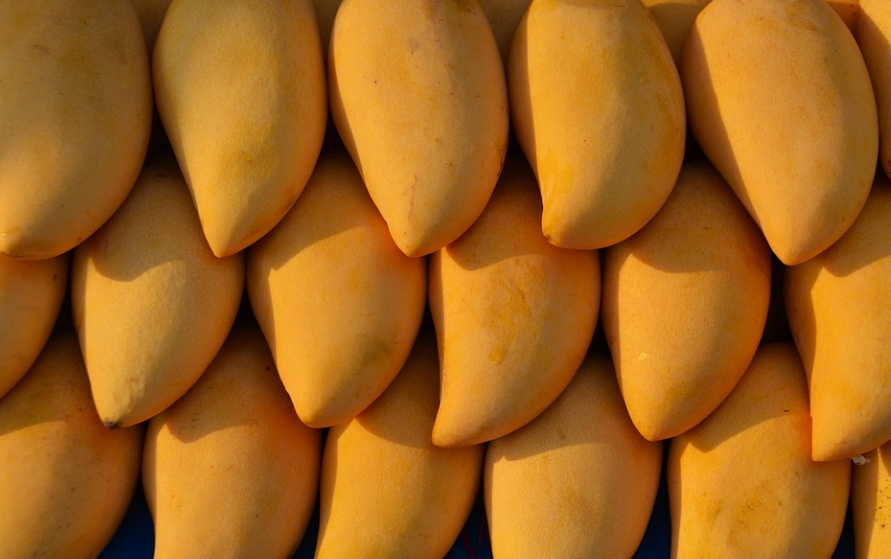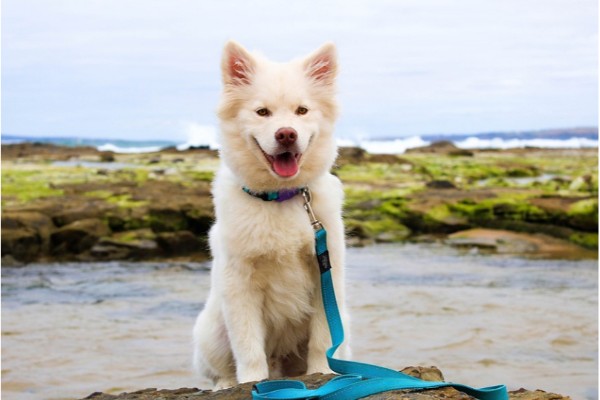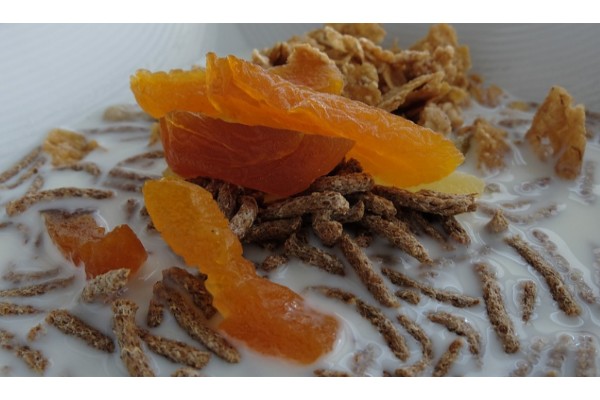Yes, dogs can eat dried mango! But only in moderation!
Like most dried fruits that are safe for dogs, dried mango is a tasty and healthy reward for your dog when they have been particularly good.
Similar to its fresh counterpart, dried mango is a good source of potassium, vitamin K, and fiber for dogs. As a result, dried mango is fantastic for regulating high blood pressure, encouraging strong bones, and relieving constipation and irregular stools!
Dried mango does have some drawbacks, though, as with all foods. You should only give your dog dried mango as a snack in moderation because it contains more sugar than fresh mango.
Table of Contents
About Mango
Tropical mangoes are a delectable combination of sweetness, creaminess, and bright yellow color. It is adaptable and fairly simple to locate in almost all supermarkets in the United States. As summer approaches, you might purchase more mangos to eat by the pool or toss in salads and salsas. Additionally, dried mango can be purchased as a sweet and chewy on-the-go snack or dessert.
If you enjoy dried mango, you might be wondering if you can give some to your dog and if it’s okay for them to eat. Short answer: yes, dogs can eat dried mango. Let’s examine the advantages and disadvantages of dried mango in more detail.
Can Dogs Eat Dried Mangoes?
Yes. Vitamins, beta-carotene, antioxidants, and potassium are all abundant in mangos. But compared to fresh mango, dried mango has a slightly lower level of health benefits and a higher, more concentrated sugar content. Therefore, even though a small amount of dried mango is safe for your dog to consume, fresh mango is preferable if you have the choice.
Does Mango Make Dogs Sick?

Your dog won’t get sick if you give him a mango or dried mango. When introducing new foods into your dog’s diet, you must, however, exercise caution. A small amount of fresh or dried mango should be given to your dog to see if they enjoy it.
A few dogs may experience an allergic reaction, although this is uncommon, and some people may not like the taste.
The mango pit is the only part that can be harmful to canines. This is so because the pit, just like apple seeds and other fruit pits, contains cyanide. Dogs cannot survive fruit pit cyanide poisoning, but humans can.
However, since dried mango does not contain the pit, it is okay for dogs to eat dried mango!
The main problem with giving fruits, including dried mango, to dogs is that eating too much of them can upset their stomachs. This is due to the high sugar content, which can cause your dog to become constipated and possibly gain weight.
Is It Safe For My Dog To Eat Mango?
Mangos are loaded with vitamins and minerals that are good for the health of your dog. First off, they contain a lot of beta-carotene, an antioxidant that gives mangoes their orangey-yellow flesh color. According to research, beta-carotene protects cells from cancer-causing free radicals.
the potassium and magnesium, both of which are heart-healthy. Lower blood pressure and stronger bones are linked to both minerals. Magnesium also has anti-inflammatory properties and even helps with depression.
Mangos are a good source of the antioxidant vitamins C and vitamin K, a vitamin that strengthens bones and prevents anemia. Mangoes’ vitamin A helps a dog’s immune system, reproductive system, vision, and organs.
How Does Dried Mango Compare To Fresh Mango For My Dog?

Approximately 3.5 times as many nutrients can be found in a small package of dried fruit as compared to fresh fruit. The daily recommended intake of some vitamins and minerals can be found in just one serving of dried fruit. However, not all nutrients survive the drying process in the same amounts as they do in fresh fruit. For instance, the amount of vitamin C in a fruit that has been dried is significantly reduced.
However, compared to fresh fruit, the bigger issue with dried fruit is that the super-concentration of nutrients that results from the drying process also leads to a super-concentration of sugar, and too much sugar is bad for dogs. High sugar intake can cause diarrhea and vomiting, as well as weight gain, dental problems, and diabetes if consumed in excess over time.
Therefore, fresh mango is a better option when it comes to feeding your dog than dried mango. However, a small amount of dried mango every now and then can give you a tasty nutritional boost.
Benefits Of Dried Mango For Dogs
In order to keep the fruit fresher for longer, dried mango simply dehydrates their fresh counterpart.
This means that, with the exception of the vitamin C content, dried mango has nutritional values that are largely comparable to those of fresh mango. Mango drying appears to lower the amount of vitamin C because it is heat-sensitive.
Even so, dried mango makes a tasty, nutritious, and healthy snack for both people and dogs. Here are the principal advantages of dried mango for canines.
- Because dried mango is so high in dietary fiber, it’s a fantastic choice for dogs who experience constipation and inconsistent stools. Dried mango is a great snack to give your dogs in between meals to keep them from scavenging for other foods because fiber keeps dogs satisfied for longer.
- Antioxidants found in mangoes and dried mangoes are excellent for the immune and digestive systems. Zeaxanthin, one of these antioxidants, filters out blue light rays. Therefore, dried mango shields the dog’s eyes from aging-related problems!
- Mangoes and dried mangoes are rich in vitamin B, which supports the production of healthy neurotransmitters in the brain. Although it won’t help, this won’t make your stupid dog any smarter!
- Calcium and vitamin K, which support and encourage healthy bones and joints, are abundant in dried mango.
- Mangoes and dried mangoes are high in potassium, which helps to counteract a diet heavy in sodium and controls high blood pressure.
How Do I Give Dried Mango To My Dog?
Give your dog a few bites of dried mango every now and then. Servings above that risk causing upset stomachs and, eventually, more serious problems like obesity. However, do not panic if your dog accidentally consumes a bag of dried mangoes. Vomiting or diarrhea is probably the result, but those side effects should disappear in around 24 hours. Contact your veterinarian if not.
If you like the idea of giving your dog mangos but are unsure of how much to give them, look into Fruitables’ well-known low-calorie dog treat that contains mango. These treats are a secure, nutritious option if your dog enjoys the flavor of mango.
Signs Of A Dog Liking Dried Mango
If your dog likes a particular food, if they are unsure about it, or if they actually dislike the new food you are having them try, you can probably tell. Each dog has a unique response to various foods; for example, while some dogs adore dried mangos, others will completely reject this fruit.
If your dog enjoys the taste and texture of dried mango, it will probably eat the fruit piece without any resistance or hesitation. Typically, they will ask for more after finishing their first piece. From dog to dog, begging may take many different forms. A beggar dog may look at you, wait patiently in front of you, or make noises like barking, howling, crying, or whining. Even worse, they might wag their tails, paw at your leg, and spin around. They might also drool…a lot.
Your dog might try to chew the food but spit it out if they don’t like dried mango. They might paw at it or try to play with it like a toy. Some dogs like to give foods and things they don’t like the “ugly face” as well, which is basically them showing their teeth or snarling.
Training Dogs To Like Dried Mangos
Your dog will either adore dried mangoes or won’t be too fond of the taste or texture. The chewy texture of dried mango may not appeal to all dogs.
You should restrict your dog’s consumption of this dried fruit if they do enjoy it. Dried mango has a lot more sugar than fresh mango, and you don’t want too much extra sugar in your diet because it is unnecessary and has no nutritional value. You must choose a brand that doesn’t include added sugars because many add additional sugar to their dried mango.
Additionally, you should chop the dried mango into smaller pieces. Frequently, dried mango is sold in long strips. You don’t want your dog to suffocate on any thick strips of mango because it can be a little chewy and hard.
If you are concerned that your dog’s diet contains too much sugar or if they don’t seem to enjoy dried mango, try giving them fresh mangoes. The sweetness, softness, and juicy nature of fresh mangoes may appeal to your dog more. Also simpler for them to chew and consume will be fresh mango. They can receive some freshly chopped mango as a special treat or snack, or you can put it in their food bowl when it’s time to eat.
The mango’s tough skin should always be completely removed because it makes the fruit difficult to chew and digest. Additionally, you must watch out that your dog never consumes the mango’s fibrous and hard pit. This flat, large pit is hard, stringy, and very difficult for you and your dog to safely digest.
Safety Tips for Feeding Your Dog Dried Mango:
- Make your dried mango organic.
- Pieces should be small.
- Steer clear of dried mangos with additional sugar added.
Are Dogs Able To Eat Dried Fruit?
Dogs can consume dried mango, but not all dried fruit. Understanding which fruits and foods are safe for dogs and which are not is crucial for avoiding potentially serious health issues.
The dried fruit that is dog-safe includes:
- Dried mangoes
- Dried jackfruit
- Dried pineapple
- Dried apricots
- Dried apples
- Dried blueberries
- Dried bananas
- Dried strawberries
The sugar content of dried fruits is higher than that of their fresh counterparts, so only give them a small amount of these.
The Dried Fruits That Dogs Cannot Eat Include:
- Raisins (dried grapes) and currants
- citrus fruits (lemon, lime, oranges, etc.) that have been dried)
- Dried tomatoes

Which Tropical Fruits Can My Dog Eat Besides These?
In addition to being safe for dogs to eat, many tropical fruits also contain a variety of nutrients that support and maintain their health. When possible, pick fresh or frozen fruits over dried ones because the latter have higher sugar contents and lose some vitamins and minerals during the drying process. Even fresh and frozen tropical fruits are high in sugar and can upset the stomach, so it’s best to only eat them occasionally as snacks rather than on a regular basis. Before feeding your dog any fruit, always remove the skin, seeds, pits, and/or core.
Pineapple
Manganese, vitamin C, and beta carotene—all of which are good for the joints—are all present in pineapple.
Papaya
Papaya has a variety of canine-friendly advantages, including digestive and dental-supporting enzymes like papain and chymopapain. Additionally, it contains a lot of antioxidants, potassium, and calcium.
Kiwi
Kiwi is a tart, sweet fruit that is rich in vitamin C, which supports the immune system, vitamin K, which heals wounds, vitamin E, an antioxidant, and folate, which supports the health of the blood, nerves, and muscles.
Banana
With nutrients like potassium, beta-carotene, and vitamins C and E, bananas are a canine superfood. Additionally, the fiber in bananas aids in digestion and helps to control blood sugar levels in the body.
Coconut
A good source of energy, unsweetened coconut, and coconut milk can keep your dog’s coat healthy and shiny. Furthermore, it is anti-inflammatory and antibacterial!
